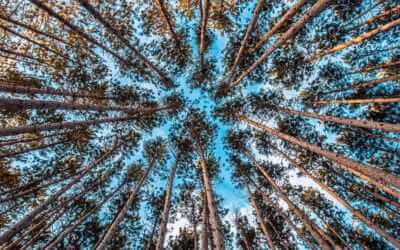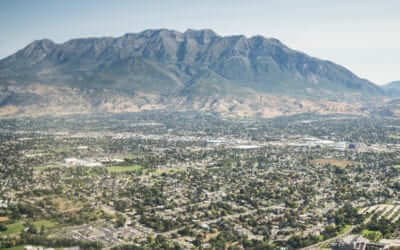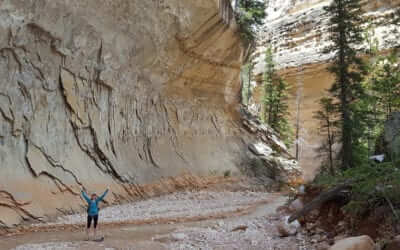© Fran Mauer
The Untrammeled Wild and Wilderness Character in the Anthropocene
Soul of the Wilderness
April 2018 | Volume 24, Number 1
Untrammeled: It’s the essence of Wilderness, the source of its mystique, its otherness, and its transcendent function. It’s a state wherein the landscape remains free from the human intent to alter, control, or manipulate its components and ecological and evolutionary processes. It’s the key word of the Wilderness Act’s “DEFINITION OF WILDERNESS,” which states “A wilderness, in contrast with those areas where man and his works dominate the landscape, is hereby recognized as an area of the earth and its community of life are untrammeled by man . . .” (emphasis added).
But why did the Act’s principal author and proponent Howard Zahniser, an editor and meticulous wordsmith, choose the rather unusual term untrammeled as the main descriptor of Wilderness? Why not define Wilderness as an area that is simply wild? After all, by definition, an area that is untrammeled is wild.
Untrammeled lends transcendent meaning to wildness. Understanding that meaning is crucial to understanding the Wilderness Act’s overarching mandate to preserve wilderness character. It reveals why preservation of wilderness character, and not just the tangible qualities of the Wilderness it includes, is the purpose of the Act and central to the larger function it was to serve. Wilderness, as historian Roderick Nash (1982) documents, was to serve as “an important symbol of a revolutionary new way of thinking about man’s relationship to the earth.” And today, another symbol of revolutionary thinking—the Anthropocene—reminds us that, as the concept’s central proponent Nobel laureate Paul Crutzen (2011) emphasizes, “We must change the way we perceive ourselves and our role in the world.”
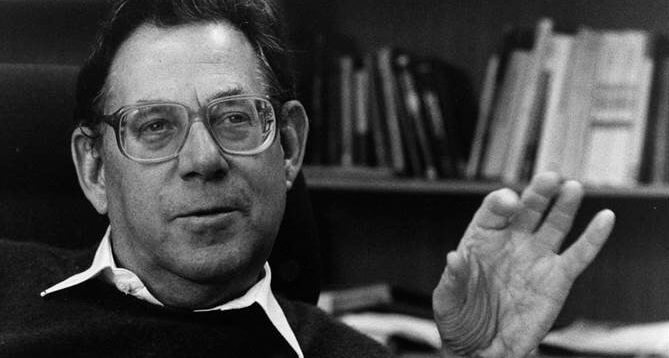
Figure 1 – Nobel laureate Paul Crutzen co-coined the term Anthropocene. “This name,” he wrote, “would stress the enormity of humanity’s responsibility as stewards of the Earth.” Photo courtesy of Paul Crutzen.
Crutzen, who co-coined the term, and other Earth-system scientists proposed the Anthropocene to describe a new geological epoch wherein “Human activities have become so pervasive and profound that they rival the great forces of Nature and are pushing the Earth into planetary terra incognita” (Steffen, Crutzen, and McNeill 2007). It’s a condition of myriad unknowns, with one certainty: our landscapes will undergo substantial change, as must our ways of relating to them.
But while geologists debate whether this emerging condition meets their stratigraphic standards for a new epoch or when it began, the Anthropocene has become more of a conceptual framework for understanding, communicating, and addressing the accelerating global transformation we face. As a scientific term, the Anthropocene describes the emerging Earth-state, offering a name for the totality of planet changing human interactions. As an approach to large-scale, long-term stewardship, it challenges us to rethink long-standing notions of nature and naturalness, our role in the biosphere, and our current conservation paradigm. For Wilderness, the Anthropocene raises many questions and poses daunting dilemmas. Among them is whether, when, or where to intervene in Wilderness to maintain (or try) “natural” conditions and unit purposes in the non-analogue future. And that begs the question: How do interventions, more and more often proposed, affect wilderness character, and particularly, the role of what is arguably it’s most important and threatened quality: untrammeled wildness.
In the new world of the Anthropocene, if we are to maintain this ineffable, invisible, and immeasurable quality of wilderness, that is, if the reasons for perpetuating untrammeled wildness are to fairly compete with the more tangible reasons for intervening, then we must better understand and articulate its values and functions.
The Idea of Untrammeled
As is well documented (Scott 2001, Proescholdt 2008), Zahniser chose the word untrammeled thoughtfully and purposely. Colleagues had recommended that he use a more common descriptor for wilderness areas. Undisturbed was recommended. But as Zahniser responded, “The idea within the word ‘Untrammeled,’ of their not being subjected to human controls and manipulations that hamper the free play of natural forces is the distinctive one that seems to make this word the most suitable one for its purpose within the Wilderness Bill” (Zahniser 1959). This is so because Zahniser’s purpose for Wilderness went beyond maintaining its natural condition. More important was to respect and perpetuate the freedom of its ecological and evolutionary processes. But beyond that, he hoped that designating some areas for this purpose would serve as a step toward expanding thinking about our role within, as the Wilderness Act says, “the earth and its community of life.” Therein lies the transcendent function of wilderness character, and why both the Act and the Anthropocene concept place us within the larger context of an Earth-system sensibility.
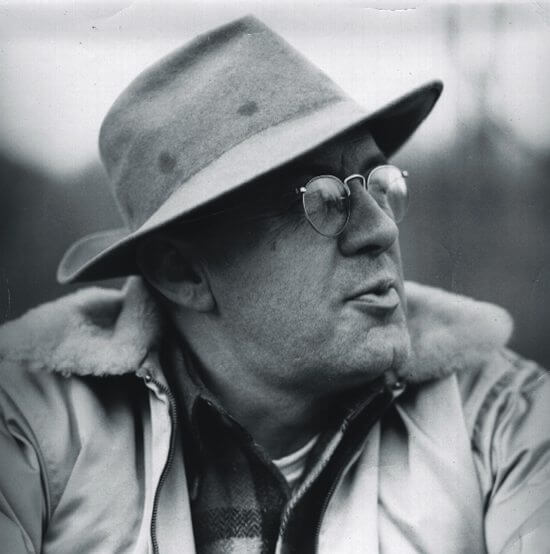
Figure 2 – Howard Zahniser, chief author of the Wilderness Act, made untrammeled the act’s key word and placed wilderness in the context of “the earth and its community of life.” Photo courtesy of Edward Zahniser.
To better understand why Zahniser determined untrammeled to be the most suitable word, consider it in the context of that contrast the Wilderness Act specifies. Physically, wilderness provides a contrast to the altered, developed, or manipulated landscape condition. But also of concern was the contrast wilderness provides between two ways of relating to—and knowing ourselves in relation to—the natural world. One way is as a species ordained to subdue and have dominion over nature. This, Zahniser (1956) said, leads people to become “less and less aware of their dependence on other forms of life and more and more misled into a sense of self-sufficiency and into disregard of their interdependence with the other forms of life . . .”
In contrast is a way of relating grounded in “an awareness of our human existence as spiritual creatures nurtured and sustained by and from the great community of life.” Thus, in a seminal summary statement reflecting the Transcendental/spiritual underpinnings of the wilderness movement and its potential to enlarge thinking about humans’ role in the larger scheme of things, Zahniser declared that:
We deeply need the humility to know ourselves as the dependent members of a great community of life . . . to know the wilderness is to know a profound humility, to recognize one’s littleness, to sense dependence and interdependence, indebtedness and responsibility.
In this writing, inserted into the Congressional Record and published as “The Need for Wilderness Areas,” Zahniser (1956) made clear that he did not intend this potential for expansion of our ethics and worldview to be a secondary purpose of Wilderness. As he went on to emphasize, “Perhaps, indeed, this is the distinctive ministration of wilderness to modern man, the characteristic effect of an area which we most deeply need to provide for in our preservation programs.”
Zahniser’s focus on ministration, meaning to minister to, to serve one’s deeper or spiritual needs, reveals his hope for places set apart from our utility, willfulness, and hubris. They might serve as a medium for opening us to that sense of obligation to the larger world in which we are embedded.
A Vision of Human-Earth Relations
Thought about the need for such ministration emerged from growing anxiety accompanying the accelerating environmental degradations of the 1950s post-war march of progress. The rapid loss of natural areas to urban, industrial, and resource-extractive uses, pollution and pesticides, and the awesome power and fallout of the Bomb: This new order of environmental threat led early wilderness movement leaders to realize how much the advance of industrial civilization was jeopardizing the welfare of all life. Indeed, theirs was the first generation to question whether future generations would even inherit the same Earth. They saw the need, now ever-more compelling, for an ethic to guide human-Earth relations for the changing world.
That need was central to the advocacy of Olaus Murie, Zahniser’s partner and director of the Wilderness Society through the Wilderness Act campaign. Murie’s (1960) larger hope for Wilderness was grounded in what he saw as “the real problem . . . of what the human species is to do with this earth.” Thus, their friend Aldo Leopold considered Wilderness to be the key to his first modern appeal for rethinking our environmental ethics. The wilderness movement, Leopold (1935) wrote, was ultimately “a disclaimer of the biotic arrogance of homo americanus. It is one of the focal points of a new attitude—an intelligent humility toward man’s place in nature.” Areas whose purpose was to remain untrammeled would serve as a geographic symbol of this attitude.
Figure 3 – Olaus and Mardy Murie on the Arctic Refuge, 1956. Olaus described wilderness as “nature’s freedom”; Mardy declared that “it is itself, for itself.”
Had the Wilderness Act’s definition used wild instead of untrammeled, it would be inclusive of areas that remained wild only because humans haven’t (yet) had a reason or the means to alter, control or subjugate them. True, such areas and what Zahniser (1956) referred to as “the wildness of the universe” are aesthetically inspiring. But such areas don’t require anything of us to remain wild. Thus, they don’t connect us to that moral vision of human-Earth relations underlying the Wilderness Act. Since they don’t require us to forgo control, or to restrain or refrain, they don’t challenge us to question the beliefs, attitudes, and assumptions underlying our profligate behavior toward the Earth community. While untrammeled areas are wild, the terms are not synonymous. Untrammeled is distinctive of those areas that are wild because we have decided, through political process, to restrain ourselves in order to perpetuate their wildness.
Simply put, areas that are wild by default don’t impart the message of wilderness character because character derives from situations in which we face a choice that tests our willingness to subordinate self-interest to a greater good, something of more encompassing and enduring importance. We value wild Wilderness because it’s the product of evolutionary processes free from human will; we value untrammeled wildness for this reason, and also because it speaks to something of our character.
The Wild Condition, the Untrammeled Relationship
So “untrammeled by man” refers to more than the landscape condition of ecological and evolutionary freedom that is wildness. At heart, Untrammeled is the inter-relational dimension of Wilderness. It’s also about us, how we relate to the natural world and its other inhabitants, and who we become when we find it within ourselves to allow some of it this freedom from our willfulness.

Figure 4 – Earthrise, a photo by Apollo 8 astronaut Bill Anders, has become a symbol of the Anthropocene. It advanced thinking about the need for global unity in protecting our shared planet.
Untrammeled is a relationship of respect for the autonomous creativity of unwilled processes, for the timeless forces that formed and shaped—and connect—our species, all species, all the Earth. It’s a relationship of deference to an area’s non-anthropocentric reason for being, a recognition of its intrinsic value. It’s a measure of that better part of us that still holds reverence for something outside human utility and desires. Through foregoing control, we enter a most genuine relationship of humility and restraint—the relationship necessary for the preservation of Wilderness and central to that message of wilderness character.
Perpetuating some areas that embody this ecocentric-spiritual relationship will be ever-more important as we move farther into the terra incognita of the Anthropocene. Already we are in a post-natural world wherein anthropogenic and natural effects on the Earth system are becoming increasingly intertwined and inseparable, evolving ever more synergistically with humans. But imagine the future of “nature” when not only our unintended ecological degradations, but also when synthetic biology, designer ecosystems, assisted evolution, geoengineering, and who-knows-what become part of the “new natural” of an ever-more managed, manipulated, and controlled planet.
The Anthropocene fact is that every year more of the Earth’s surface is modified to serve human purposes, and more of the chemical, biological, and thermal properties of its atmosphere, hydrosphere, lithosphere, and ecosphere are being pushed from their historic range of variability. Thus, wilderness areas, unfortunately, will also continue to become less and less natural. Attempting to maintain their natural conditions or components will require increasing
levels of intervention, manipulation, and ecological restoration. But their untrammeled wildness, that is, their freedom from human intent, as opposed to human effect, can be perpetuated—as long as we refrain from imposing our will. We need only to allow them the autonomy to adapt and evolve as they will. To the degree this deference becomes a greater focus of our wilderness stewardship, our descendants may realize Zahniser’s ministerial potential of wilderness character.
Other Wilderness Values
However, this is not to say there should never be intervention or restoration in any Wilderness. It is inevitable, if not desirable, that in some areas, in some situations, we act to maintain focal or endangered species, or meet other establishing purposes of the park, refuge, or forest units designated as Wilderness. I have reluctantly, grudgingly, concluded that in the disconcerting future we face it is not reasonable to think our society will be willing to maintain all 110 million acres of Wilderness as the framers of the Wilderness Act intended. They were visionaries, certainly, but they worked in the context of 1950s conditions and understandings of the potential for large-scale anthropogenic change. They couldn’t have foreseen what is now recognized as “the dilemma of wilderness management,” (Cole and Yung 2010) the question of whether, where, or when maintaining “natural” conditions or wildness should have primacy, where maintaining one compromises the other. A potential solution would be to identify some areas where limited, targeted, and temporary intervention or restoration is permissible, and others as strictly hands-off, no intervention areas. Within the latter, our role would be to allow wilderness systems to adapt and evolve as they will, and we would accept, for example, that within them some species will decline or be extirpated and replaced by others more suited to the changing conditions.
This approach would enable perpetuation of the full range of values of the national wilderness system. It may be the only viable means of ensuring that the multiple values of the untrammeled condition are perpetuated.
Untrammeled Wildness in a Brave New World
The untrammeled wild areas can serve the future, as Leopold espoused, as a scientific laboratory for understanding how ecological systems function, transition, and respond to anthropogenic change when left alone. Those who inherit the next century of the Anthropocene will surely use Wilderness as a baseline for understanding the changing Earth system. But perhaps they’ll also, as Zahniser believed, use Wilderness as a reference point for thinking about who they are in relation to it. So, imagine too the potential importance of this touchstone function as society and human nature change.
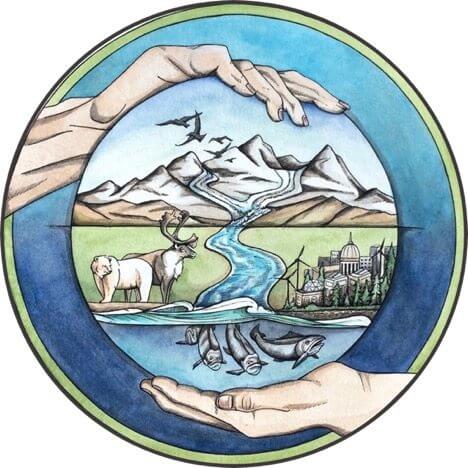
Figure 5 – The Anthropocene by artist Lindsay Carron. The Anthropocene concept speaks to the deepening intertwining of natural and human systems and challenges us to rethink long-standing notions of nature and naturalness.
Consider today’s trends and future projections signaling the direction humanity is evolving. Think beyond to when bio-neural-genetic engineering, cybernetic implants, augmented reality systems and-who-knows-what will have changed our minds and bodies. Might not the heirs of this coming Brave New World appreciate inheriting some areas whose freedom from human agency provide the ultimate contrast to the dominant value-and-manage-everything-for-us paradigm? Might they not appreciate inheriting a few authentic remnants of this Earth—areas whose authenticity is not based on some desired prior condition, but rather grounded in their unbroken connection to the autonomous processes of their genesis and unfolding?
Evolutionary Heritage Sites
More important to our descendants than the tangible ecological and scientific laboratory functions that untrammeled Wilderness areas can provide may well be their function as heritage sites. For the same reason that across cultures and throughout history societies have set places apart as sacred groves, monuments, memorials, and shrines, these areas can serve as places of remembering and reflection. Endowed with such meaning, untrammeled wild areas can serve to keep in memory conditions and ways of the past that provide insight into the specie’s nature, and how it became as it is.
As such, untrammeled wild places can serve as an anchor point as humanity reshapes its world and itself. They can serve those who inherit the next century of the Anthropocene as living museums of the unordered, unwilled processes of their origin as creatures of the wild. They can serve as an archive of their co-evolutionary kinship—and shared destiny—with all lifeforms.
For those who visit, the main values of the “Wilderness Experience” within these monuments to untrammeled wildness may lie in the nowhere-else opportunity they provide for an atavistic, experiential glimpse of the world in which their evolutionary journey began, and to feel the sheer otherness of a place that is there for itself.
As places set apart from human willfulness and hubris, their otherness can serve Zahniser’s contrast value for understanding how these traits have distanced humankind from its sense of dependence and interdependence with the rest of life. They can serve as reference points for questioning the assumptions underlying an increasingly utilitarian, materialistic, and technological society. Untrammeled wild areas will be there—if we are willing—to provide perspectives our descendants can consider in deciding what of their culture, genome, and world will be passed on.
And should the age-old and universal longing to connect to an ultimacy providing meaning outside and beyond themselves remain part of their humanity, perhaps our descendants will also find untrammeled Wilderness to serve as a cathedral of spirituality. It might function as a sort of geographical Sabbath, a reminder of why, across cultures and throughout time, great prophets and visionaries had gone to the wilds to penetrate the transcendent truth that the greater meaning of life is only to be found in relation to the larger community.
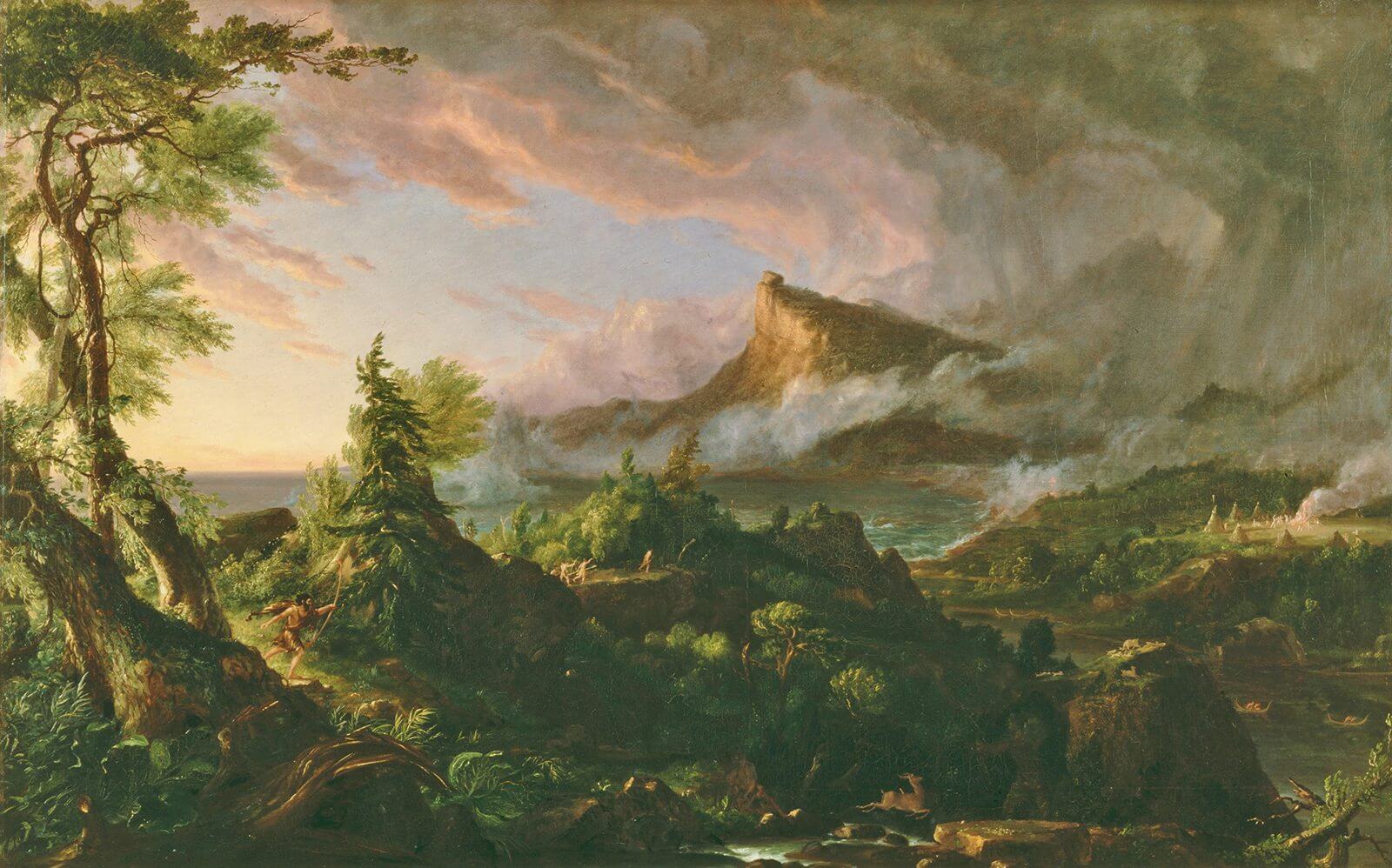
Conclusion
The deepening intertwining of natural and human systems is at the heart of the Anthropocene concept. That the sustainability of human-Earth relations is the most basic issue of our time—and for all future time—is its central insight. The scientific, ecological, experiential, and aesthetic values and functions of the wilderness condition will surely become more important as humans journey further into this uncharted and unsettling phase of planetary civilization.
But perhaps more important will be that ministration of Wilderness character. That is, the function of untrammeled Wilderness as the symbolic embodiment of an evolutionary-ecological-ethical worldview that is grounded in the recognition of our dependence and interdependence, our need for belonging and connection, and our sense of responsibility and obligation.
Endowed with such meaning, untrammeled Wilderness becomes an encouraging demonstration and reminder of our capacity for restraint. It stands as a symbol of the willingness to think outside our utility and beyond our time that is needed to further the emergence of a new planetary sensibility. It is what Zahniser (1961) hoped might open us to “a sense of ourselves as a responsible part of a continuing community of life,” and what he knew is the essential precondition for entering into a sustainable relationship with this finite and conflicted Earth system we share.
ROGER KAYE is the wilderness specialist for the U.S. Fish and Wildlife Service, Alaska and an affiliate faculty at the University of Alaska. This article is based on the author’s judgement, interpretation, and emphasis, and does not constitute a policy position of the author’s agency; email: rogerkaye7@gmail.com
References
Cole, D. N., and L. Yung, eds. 2010. Beyond Naturalness: Rethinking Park and Wilderness Stewardship in an Era of Rapid Change. Washington, DC: Island Press.
Crutzen, P., and C. Schwagerl, 2011. Living in the Anthropocene: Toward a new global ethos. Yale Environment 360. 24 Jan 2011.
Leopold, A. 1935. Why the Wilderness Society. Living Wilderness 1:6.
Murie, O. 1960. Letter to Hon. E. L. Bartlett, 17 August 1960, author’s files.
Nash, R. 1982. Wilderness and the American Mind. 3rd ed., New Haven: Yale University Press.
Proescholdt, K. 2008. Untrammeled wildness. Minnesota History 61: 114-123.
Scott, D. W. 2001. “Untrammeled,” “Wilderness Character” and the challenges of wilderness preservation. Wild Earth. Fall/Winter, 2001-2002.
Steffen, W., J. P. Crutzen, and J. R. McNeill. 2007. The Anthropocene: Are Humans Now Overwhelming the Great Forces of Nature? Ambio 36(8): 614-621.
Zahniser, H. 1956. The need for wilderness areas. Living Wilderness 1956-57, 37-43.
____. 1959. Letter to C. Edward Graves, Apr. 25, cited in Doug Scott, The Enduring Wilderness. Golden, CO:
Fulcrum Publishing, 2004.
____. 1961. Congressional Record 18355 – 18356. (September 6, 1961).
Read Next
Wilderness Giant: Stewart “Brandy” Brandborg Moves on at 93
Steward Brandborg was a phenomenal wilderness champion, the last wilderness advocate with ties to most of the founders of the modern wilderness movement.
Cultural Meanings and Management Challenges: High Use in Urban-Proximate Wildernesses
As outdoor recreation increases in popularity and metropolises grow larger, the issues facing urban-proximate wilderness and protected lands will continue to come to the forefront.
Measuring Forest Service Wilderness Character Trends with Partners
These partner organizations increase agency capacity, and in 2018 they helped ensure a successful official start of Forest Service Wilderness Character Monitoring implementation.

